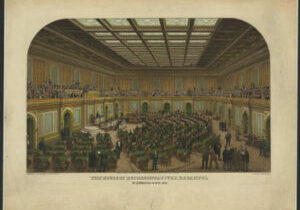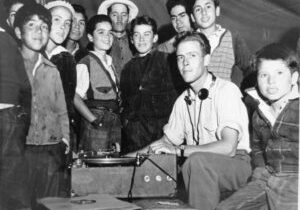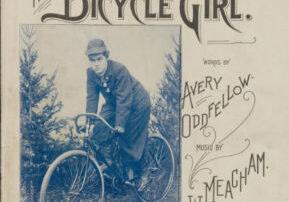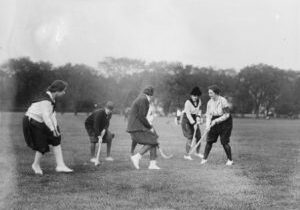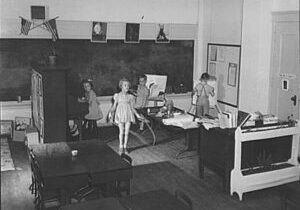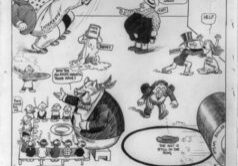Lesson Plans
U.S. Constitution: Continuity and Change in the Governing of the United States
Students analyze primary sources to examine continuity and change in the governing of the United States, studying the Constitution and Bill of Rights, investigating important issues that confronted the first Congress, and examining current congressional debates over similar issues. After, students explore the historical effects of early Congressional decision-making in the establishment of national holidays, brainstorm reminiscent modern-day holidays, and consider why we commemorate special days.
Oral History and Social History
Students study social history topics by analyzing life histories from the Federal Writers' Project (1936-1940) that recount the lives of ordinary Americans. Based on these excerpts and further research in the collections, students develop their own research questions, then plan and conduct oral history interviews with members of their communities.
Music and U.S. Reform History: Stand Up and Sing
Throughout American history, popular music has reflected the mood and opinions of the times. By analyzing sheet music and song sheets, students explore issues related to industrialization and reform to answer the essential question, "How does society respond to change?" After, students work in groups to create song sheets about reform topics from the Progressive era and also from the present.
Recreation Yesterday & Today
Students conduct research and analyze primary sources to investigate entertainment and recreation in the 1920s and 1930s, comparing urban and rural experiences for this time period with their own experiences. After, students may conduct oral histories with local people in order to test their conclusion about recreation and entertainment in their community or use population density maps or settlement maps to hypothesize about a connection between distance and entertainment.
Natural Disasters: Nature’s Fury
Students analyze a variety of primary sources to examine Americans' life changing experiences with nature during the late 19th and early 20th centuries, then research the Library of Congress online collections to broaden their understanding of how communities have dealt with disaster. Next, students connect their investigations to a literary work of historical fiction based on a natural disaster and conduct additional historical inquiry research. After presenting their findings students may examine a recent natural disaster, locating and analyzing primary source documents related to it, and noting similarities and differences in causes, effects and community responses to those of earlier times.
Local History: Mapping My Spot
Through primary source analysis of different types of historical maps, students begin to see their homes as places of value in relation to the broader community portrayed on the panoramic map of their town. After, students document their town’s history for coming generations, placing themselves on a map of their creation and writing letters to future children in their community.
Shaping the Future by Preserving Our Heritage
Students explore historic and contemporary artifacts that tell the American story and inspire them to dream. After, students consider how preserving our heritage can help shape the nation's future.
National Anti-Suffrage Association
Students analyze primary sources to investigate creator purpose and arguments against woman suffrage. After, students explore a current suffrage issue, such as felon voting rights or lowering the voting age to 16, and create an image to convince viewers to support or oppose the issue they investigated.
At School
Students compare and contrast school historical and contemporary classrooms and extended day care school programs and the value they provide to communities.
Everybody’s Doing It!
Students consider point of view and creator purpose as they analyze an historical political cartoon, then create a political cartoon that relates to federal, state or local government today that keeps the title, “Everybody’s Doing It!”
